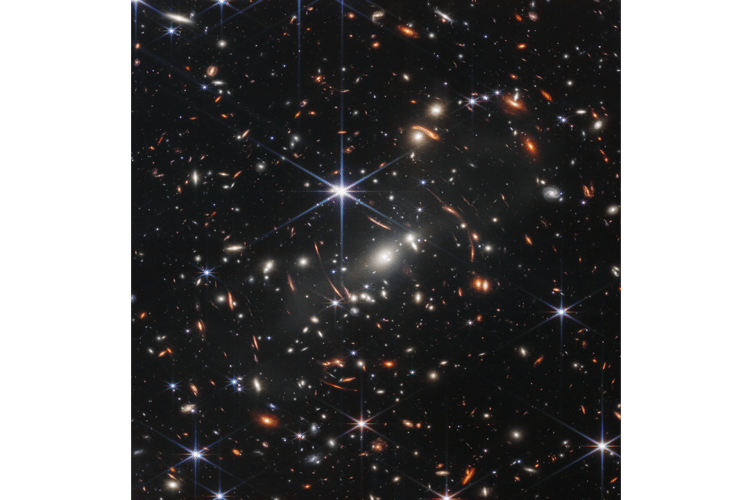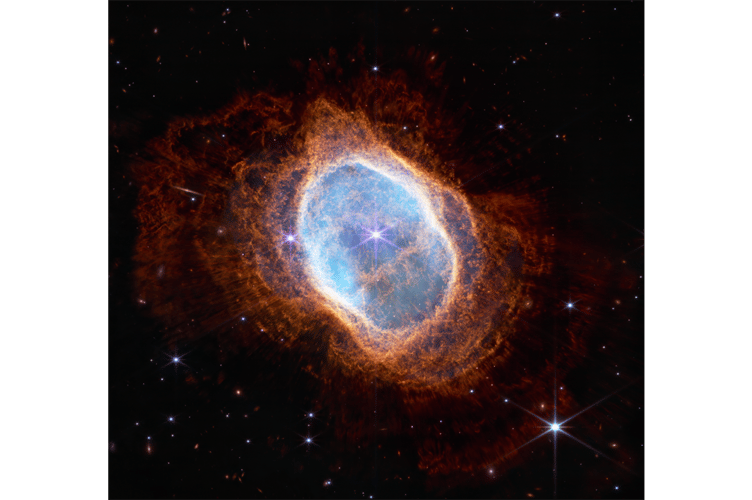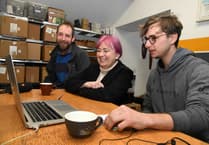AN Aberystwyth scientist hopes that the stunning images captured by the James Webb telescope of deep space will inspire the next generation of young people to get involved in astronomy.
Professor Huw Morgan, Head of Solar System Physics at Aberystwyth University, said the spectacular images released by the $10 billion NASA project will change our understanding of the creation of stars and the early beginnings of the universe.
Speaking to Radio Cymru, Prof Morgan said: “It is a very exciting day. Many people will remember the first images from the Hubble telescope. James Webb goes much further.
“We are able to look back further in time and the hope is to learn more about the creation of the first galaxies.
“What is special is that, it’s not just that NASA reveals this pretty images, but there are several spectrometers on the James Webb that give more scientific data that will change a lot of things.”
Prof Morgan told the Cambrian News: “The stunning images released yesterday have an indirect benefit to us in the physics department at Aber Uni, in that they inspire the next generation of young people to get involved in astronomy, and may decide to study astrophysics with us here.
“Our research is focused on the Sun and space weather, so unfortunately the James Webb telescope is not being used by us directly in research.”

The James Webb Space Telescope launched on Christmas Day 2021, on an Ariane 5 rocket from Europe’s Spaceport in French Guiana, South America. After completing a complex deployment sequence in space, Webb underwent months of commissioning where its mirrors were aligned, and its instruments were calibrated to its space environment and prepared for science.
An image of the Carina Nebula caught the attention of many yesterday, displaying a landscape of mountains and valleys, speckled with glittering stars,
Captured in infrared light by the space telescope, this image reveals for the first time previously invisible areas of star birth.
Called the Cosmic Cliffs, Webb’s seemingly three-dimensional picture looks like craggy mountains on a moonlit evening. In reality, it is the edge of the giant, gaseous cavity within NGC 3324, and the tallest “peaks” in this image are about seven light-years high. The cavernous area has been carved from the nebula by the intense ultraviolet radiation and stellar winds.
NASA says these images will shed light on the process of star formation.
Another image gave new insight into the Stephan’s Quintet, a visual grouping of five galaxies, is best known for being prominently featured in the holiday classic film, “It’s a Wonderful Life.”

This enormous mosaic is Webb’s largest image to date, covering about one-fifth of the Moon’s diameter. It contains over 150 million pixels and is constructed from almost 1,000 separate image files. The information from Webb provides new insights into how galactic interactions may have driven galaxy evolution in the early universe.
With its powerful, infrared vision and extremely high spatial resolution, Webb shows never-before-seen details in this galaxy group. Sparkling clusters of millions of young stars and starburst regions of fresh star birth grace the image. Sweeping tails of gas, dust and stars are being pulled from several of the galaxies due to gravitational interactions. Most dramatically, Webb captures huge shock waves as one of the galaxies, NGC 7318B, smashes through the cluster.
Another image released on Tuesday revealed the dying star’s final ‘performance’.

Two cameras aboard Webb captured the latest image of this planetary nebula, cataloged as NGC 3132, and known informally as the Southern Ring Nebula. It is approximately 2,500 light-years away.




